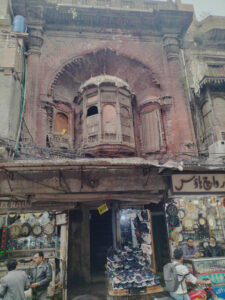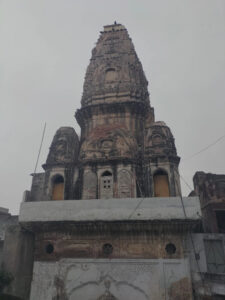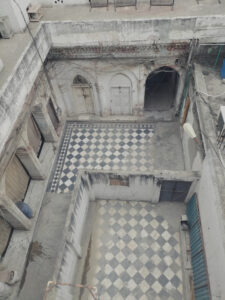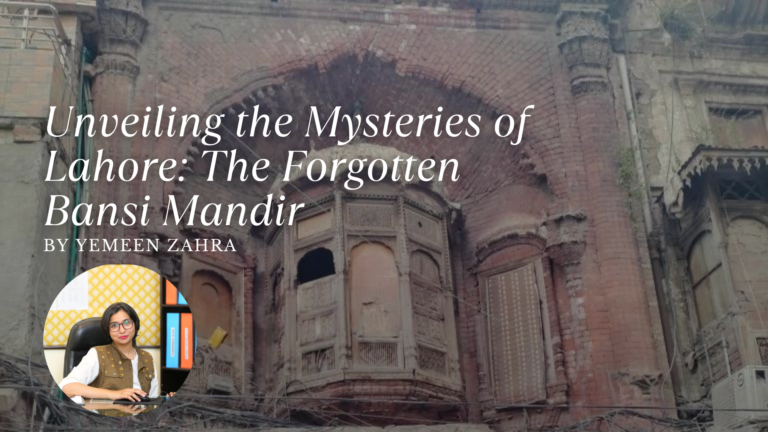By Yemeen Zahra
Lahore, a city known for its rich culture and heritage, harbours many mysteries within its lively streets. One such historical treasure is the Bansi Dhar Mandir, tucked away in the colourful Anarkali Bazaar.

Located at the bustling intersection of modernity and days of old, Bansi Dhar Mandir, or Bansi Temple, is a silent witness to Lahore’s ever-changing landscape. It’s nestled at the end of Anarkali Bazaar, surrounded by the chaos of daily life and overshadowed by the tomb of Qutb-ud-Din Aibak. What makes this an architectural marvel, in particular, is how its European facade blends in with traditional design, speaking volumes of the era during which it was a central part of Lahore’s Hindu community.
Architectural Wonders and Woes
As we peel the layers of the past, the Bansi Mandir reveals itself as a place of worship and a complex background. Originally built by a wealthy Hindu family during the colonial period, the temple’s intricate design and spacious haveli tell tales of prosperity and religious significance. The standout feature, a wooden jharokha (enclosed balcony), exemplifies fine craftsmanship that has withstood the test of time.
However, time hasn’t been very been kind to Bansi Mandir. Once a symbol of spirituality and community, it now stands in partial ruin, its rooms and courtyards occupied by multiple families. The temple, now a residential property, showcases the harsh realities of urban encroachment and fading heritage. Residents have creatively segmented the vast haveli into personal spaces, preserving the shell, but altering the soul of this site.

A Call for Preservation
Amidst the hustle and bustle of Anarkali Bazaar, the Bansi Mandir is more than just an architectural landmark; it is a reminder of Lahore’s multicultural past. The temple, with its unique blend of European and traditional elements, symbolizes the harmony that once was. However, it also underscores the urgent need for cultural preservation.
The story of Bansi Mandir is not unique in Lahore’s historical context but serves as a wake-up call for efforts towards maintenance, urging us to safeguard our cultural treasures for future generations.
A Living Legacy: Anarkali Bazaar and Beyond
This exploration is not just about uncovering a structure; it’s about revisiting our roots and understanding the history that’s embedded within our urban landscapes. The Bansi Mandir, with its silent courtyards and hidden stories, propels us to reflect on the past and ponder over the legacy we wish to leave behind.

I extend my heartfelt gratitude to the residents, merchants, and visitors of Anarkali Bazaar. Their everyday lives contribute to the ongoing story of this historic marketplace, ensuring that the spirit of Anarkali continues to thrive amidst the challenges of modernity.
Yameen Zahra



